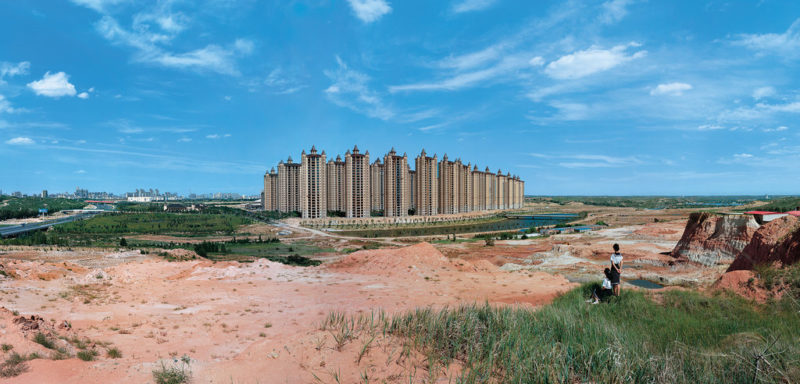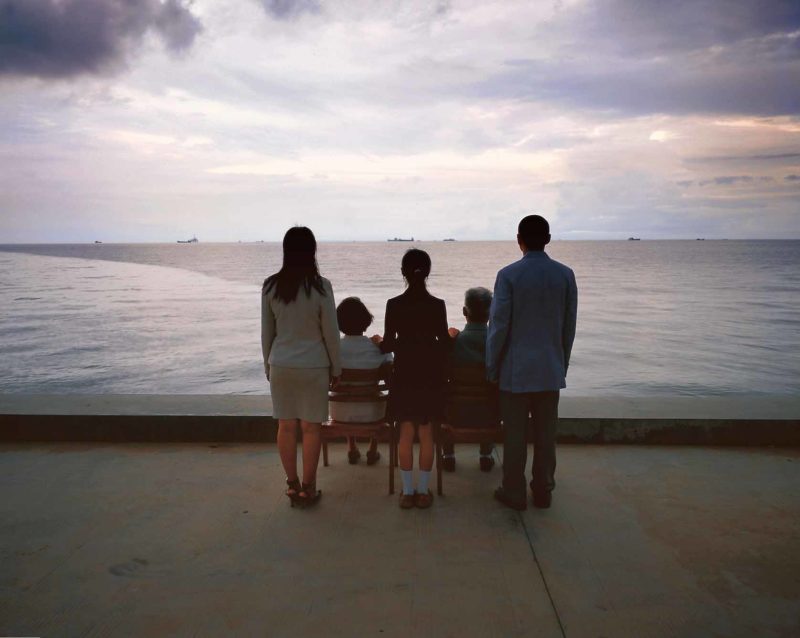
Who is photographer Weng Fen?
Born in 1961, Weng Fen is a Chinese photographer and an active contemporary artist since the late 1990s. He is famous for creating works related to nature, humans, and urbanization. The artist is a native of the Hainan province and studied at Guangzhou Academy of Fine Arts, where he graduated in 1985.
First photos
Weng is inspired by both physical and emotional transitional phases and changes that were taking place in China in the 1980s and started making photography after a trip to Hong Kong and the United States in the late 1980s.
In 1988, while I was traveling through Hong Kong and the United States of America, I bought my first camera: a Nikon for beginners. By the end of the same year, I returned to Hainan and started this practice of photography. I began to contemplate and arrange the city through the camera viewfinder. I particularly like Jeff Wall and Nan Goldin, but perhaps the Dusseldorf School of Photography that has most influenced me. I notably love their thinking, the way they conceive things, their vision, and their photographic style.
Accomplishments
Throughout his career, Weng Fen has contributed to more than 50 exhibitions both in his homeland and abroad, generating a worldwide reputation. He has had his work exhibited in Asia, American, and Europe, including notable galleries such as the San Diego Museum of Art, the Centre Pompidou in Paris 1, the Taipei Museum of Contemporary Art 2, the Shanghai Art Museum, the International Center of Photography in New York City, the Mori Art Museum in Tokyo 3, the Singapore Art Museum, and the Kunstmuseum Wolfsburg in Germany.
What Weng is known for
His epic photographs focus on the upraising of urbanism in major cities like Shenzhen 4, Haikou 5, and Shanghai 6, which he illustrated in his series titled Sitting in the Wall, Bird’s Eye View, and Staring at the Sea. His subjects on the images face away from the camera and look into this awe-inspiring revolution with hope, fear, and curiosity to being in the thick of it all.


Two schoolgirls gazing out to Kangbashi New Area, formerly farmland and now the showpiece district of Ordos City, in China

Another view of Kangbashi
Sitting on the Wall
In his enthralling photo series called Sitting on the Wall, Weng Fen captures teenage girls and new cities on the cusps of change. In the images, the faceless young women sit on a concrete wall in cities, gazing out toward the modern skyline in developing commercial districts. Their backs face the camera, thus concealing their identity except for their somewhat varied school uniforms.
In the meantime, the booming new tall structures dominate the background of the images, their postmodern design depicting an increased investment and looming changes about to sweep throughout the city.
Replicating the intriguing scene in each image, the artist highlights the growing gap between the disenfranchised urban populace and the inhabitants in more central parts, as cities continue to attract more capital for development and the upper class.



The meaning
Just like the cities they are gazing at, the girls featured in the pictures are also at transitional stages of growth in their lives. The vibrant colors of the new skyline captivate the audience and the subject, who in the meantime remain fixed on a steep precipice. Weng Fen’s images offer an ambiguous depiction of urban transformation.
While the teenage girls and the cityscape suggest youthful energy, the girls’ posture evokes either apprehension of the inevitable development or a quiet moment of solitary reflection. With one leg hanging on the visible side of the wall, the girls’ positions suggest having one foot in the future and another in the past.
One usually sees a photograph as capturing a very slender slice of history. However, Weng Fen’s images appear to depict China’s future and present, with the divide on which the girls sit in the present.





Bird’s Eye View
In Weng Fen’s next project, Bird’s Eye View, he again uses school girls as his subjects, though for this body of work, some of them are looking down from the tops of skyscrapers rather than sitting on walls looking up from ground level. However, the foreground, which is now the building’s roof, remains a separate space, different from the extensive skyline yonder.
In these images, the teenage girls are completely within the forefront rather than straddling two areas and stand with their backs to the camera so that their sightline, though hidden from the viewer, is apparently directed into the cityscape further ahead.
The fact that we cannot see the girls’ facial expressions, we are obliged to use our greater degree of imagination.









Analysis
Sitting on the Wall, Bird’s Eye View, and Staring at The Lake are about China’s era of modernization and urbanization that took place during the 1980s through economic globalization. The countryside’s urbanization development and the psychological mutations that resulted from the transformation are what Weng Fen is trying to capture with these images.
Speaking about the similarities between Sitting on the Wall and Bird’s Eye View, Weng Fen said:
These young girls are the mirrors of us. The distant cities are the by-products of modernization’s dream; in the eyes of people, they represent civilization and modern progress. The city has become the religion of today. By calmly observing this ‘hyper-progress’, I can then understand that men’s desires are the basis for social problems. The girls embody these desires, these needs. Through them, we are at the same time excited, puzzled, waiting…
The cities in the pictures (Haikou, Guangzhou, Shenzhen, and Shanghai) represent artificial nature, while the people are the host. The changes between the host and the guest (artificial nature) have resulted in uncertainty about rural urbanization.
The city of Haikou, where Weng Fen comes from and where some of the photographs were taken, used to be an experimental base of urbanization and modernization after the rural province of Hainan became China’s first Special Economic Zone in the 1980s. Within a short time, Hainan was transformed into a commercial zone.




Conclusion
The teenage girls sitting on the walls that separate the city and the rural area evoke the past scenery, while the shadow of the girls directs the audience to look at the city and the future. Sitting on the Wall reveals the transformations between artificial nature and humans; the cultural and psychological changes of people brought about by modernization.








